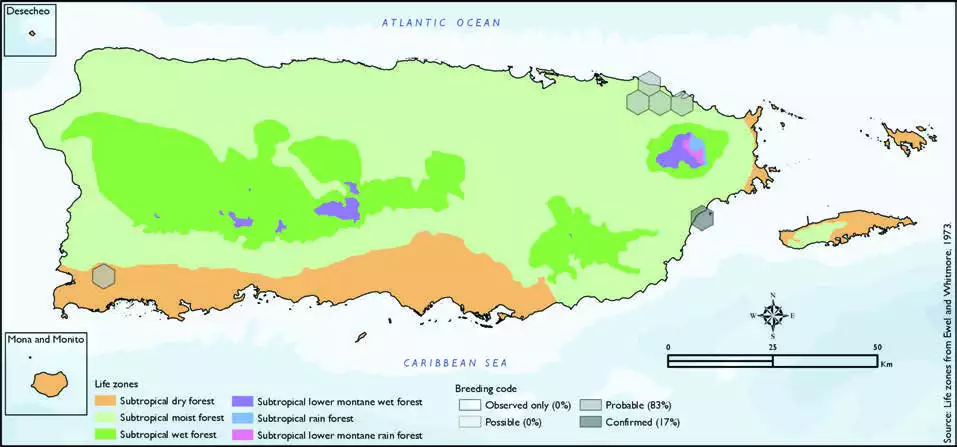Yellow-crowned Bishop
Description
The yellow-crowned bishop (Euplectes afer) is a species of passerine bird in the family Ploceidae native to Africa south of the Sahara. It is highly sexually dimorphic in its breeding season, during which the male adopts a distinctive yellow and black plumage, contrasting with the female's predominantly brown coloration. Three subspecies are recognised.
The yellow-crowned bishop is 95 to 105 mm (3.7–4.1 in) in length and 15 g (0.53 oz) in weight. During the breeding season it is sexually dimorphic — that is, the observable characteristics of the males become more apparent. During the breeding season, the male has distinctive golden yellow and black plumage. The bill of both sexes is short and conical. The color of the male's bill is black during breeding season; by contrast, during non-breeding season, the male's bill is horn in color, as is the female's. The legs and feet are pinkish brown. The male has a black lower face, throat, breast and belly, a wide black collar on the back of the neck, and a brilliant yellow crown, forehead, and hindcrown. There is a yellow patch on the shoulder, and the rump and back are yellow. The wings and tail are brown. During non-breeding seasons the male plumage looks like the female plumage. The female yellow-crowned bishop has pale brown upperparts, with darker streaking. The eyebrow is paler and the underparts are off-white with fine dark streaks on the breast and flanks.
Distribution & Habitat
The Yellow-crowned Bishop is native to Sub-Saharan Africa and
has been introduced to Puerto
Rico and Jamaica in the West
Indies (Camacho Rodríguez
and others 1999, Raffaele and
others 1998). The species was first recorded in Puerto Rico
in 1971 (Raffaele and Kepler
1992). It is uncommon in Puerto
Rico and has been observed
mostly in marshes around San
Juan, the Río Piedras Botanical
Garden, Torrecillas, Cartagena
Lagoon and the Agriculture
Experimental Station at Lajas,
fields around the Ponce airport,
and in the Humacao Natural
Reserve (Hernández-Machado
2003, Raffaele 1989a, Raffaele
and others 1998, Rivera 2003,
Salguero 2003). It is also found
locally in the municipalities of
Canóvanas and Río Grande, as
well as the southwestern region
of the island (Oberle 2018). This species is found locally
in areas of high grasses and
reeds near bodies of freshwater
including along rivers and
freshwater lagoons (Raffaele
1989a, Raffaele and others 1998),
as well as marshes and shrubby
fields (Oberle 2018). The atlas
fieldwork yielded a total of 21
records within six hexagons
or 1 percent of the 479 total
hexagons (see map). Of the six
hexagons where this species
was found, breeding met the
atlas definition of confirmed in
17 percent (one) of the hexagons
and probable in 83 percent (five)
(see map). Yellow-crowned Bishop distribution. The map shows the highest breeding code by hexagon and overlaying the ecological life zones
in Puerto Rico. Note: percentages may not total 100 due to rounding. 235Yellow-crowned Bishop/Napoleón Tejedor

Breeding Habits
Previously published reports indicate that the Yellow-crowned
Bishop breeds between June and
October (Raffaele and others
1998). Atlas results indicate
that bishop breeding peaks in
June through August, although
evidence for some breeding
was found in other months
(see chart). Most breeding
occurs in the subtropical moist
forest life zone (see map and
table). Results suggest that this
species breeds mostly within the subtropical moist forest life zone
(83 percent of the hexagons)
(see table and map).
Conservation
The global population size of the Yellow-crowned Bishop has
not been quantified or assessed,
but the species is described as
common (Urban and others
2004). Due to the lack of
evidence for any declines or
substantial threats, the current
population trend is suspected
to be stable. This species is currently listed as a species
of least concern by the IUCN
(BirdLife International 2018).
Locally, this species is not
listed in any of the threatened
categories of PRDNER and
USFWS. In Puerto Rico, the
Yellow-crowned Bishop has a
protected habitat in land of 10
percent or 15 km2 of the total area covered by the hexagons
where evidence of breeding was
found for this species (143 km2).
Related Species
Family:
bishop